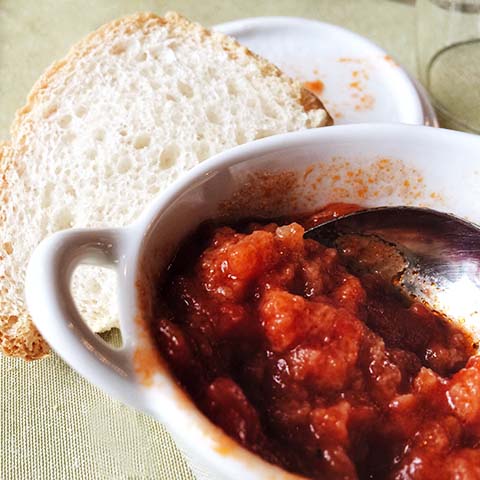Alexis Gabriel is the man behind the Youtube channel French Guy Cooking, where he showcases his food hacks and cheat sheets to classic French recipes. The witty Parisian reveals where to find the ultimate croissant, his favourite view of the city (it’s not from the Eiffel Tower), and what “l’art de vivre” is to him.

Photo: French Guy Cooking
What do you feel defines Parisian cuisine?
The Parisian cuisine has got to be associated with the restaurants. From a humble but decent café where you can have a sandwich at the counter, to a busy brasserie where you’ll get an entrecôte with french fries, then to a bistrot where you’ll be dining out of hearty modernised dishes, to finally a Michelin starred restaurant which will always remain a proud icon in our city.
What do you feel are the most common misconceptions about French food?
People see French food as a posh, high-end and overcomplicated affair. And I believe it is not their fault but ours. Expensive ingredients, chef’s whites, the white table setting and expensive silverware can be appealing, but in my opinion it can be repulsive.
How is Parisian cuisine different from other parts of France?
Paris takes influences from all around the country, so you can taste many different and authentic French specialities in the city. But Paris also takes influences from all over the world. Being an international capital, this city sucks in all the latest food trends that can be found, be it from Asia, Africa or America.
Photo: French Guy Cooking
Which parts of Paris is the best for food?
I believe the East of Paris, especially the 11th arrondissement, produces the best food. This is not based on any kind of fact, but on something arbitrary – I was born there! (laughs)
What are some local food you feel travellers can’t leave Paris without trying?
Don’t leave without trying a baguette; go for a traditional baguette. Also, the jambon-beurre sandwich, which is the most classic Parisian sandwich you’ll find. If you feel adventurous, go for the raw steak tartare.
Pastrami and kalamata olives tapenade in traditional baguette. Photo: French Guy Cooking
Jambon-beurre sandwich. Photo: French Guy Cooking
French steak tartare. Photo: French Guy Cooking
What is a typical Parisian breakfast for you?
Croissant and coffee at the counter in a busy café.
Where are your favourite cafés in Paris for a good croissant?
When it comes to the almighty croissant, the best place would not be at a café, but at the most amazing boulangerie – Blé Sucré, located on 7 Rue Antoine Vollon.
Photo: French Guy Cooking
Where are your favourite restaurants or cafés in Paris?
I’ll give you three of my favorite foodie streets in Paris. They are the Rue des Martyrs, located in the 9th arrondissement. It is a beautiful foodie street with plenty of places to eat but mostly takeaway.
Rue Paul Bert, located in the 11th arrondissement where you can find a few of the finest Parisian bistrots. For an authentic French meal, I would visit Bistrot Paul Bert on Paul Bert street.
Rue du Cherche-Midi, in the 6th arrondissement, where you can find many foodie spots and great Italian food as well. Let’s stay open minded shall we?
What do you feel most travellers miss out on when they are visiting Paris?
Tourists – and I can’t blame them for that – prioritise the famous attractions such as the Notre Dame, the Eiffel tower and the Champs Elysées. These are all great and superb places, but from a foodie point of view they are definitely not. My advice is to take some time, walk off the beaten paths and you’ll find gems in the side alleys.
Wander and get lost in the alleys of the 10th and 11th arrondissements, instead of walking straight into the beautiful yet massive and overcrowded avenues of the 8th arrondissement.
Where can we go to see your favourite view in Paris?
It can be a bit dark at night so I would prefer a day visit to le Parc de Belleville, where there’s one of the most beautiful views of Paris, and a café where you can enjoy l’art de vivre.
What do you mean by l’art de vivre?
“L’art de vivre” is a French expression which literally translates into “the art of living”. It means to take the time to embrace life with your eyes, your ears and your mouth. Savour each and every moment, instead of wasting them.
What is on your travel bucket list?
They would be: getting cooking knives in Seki, Japan; visiting and eating in the 23 provinces of China; learning Persian in Teheran; jumping high with the Maasai in Kenya; cooking on an Asado in Argentina; walking sleepless on a bright night in Iceland.















